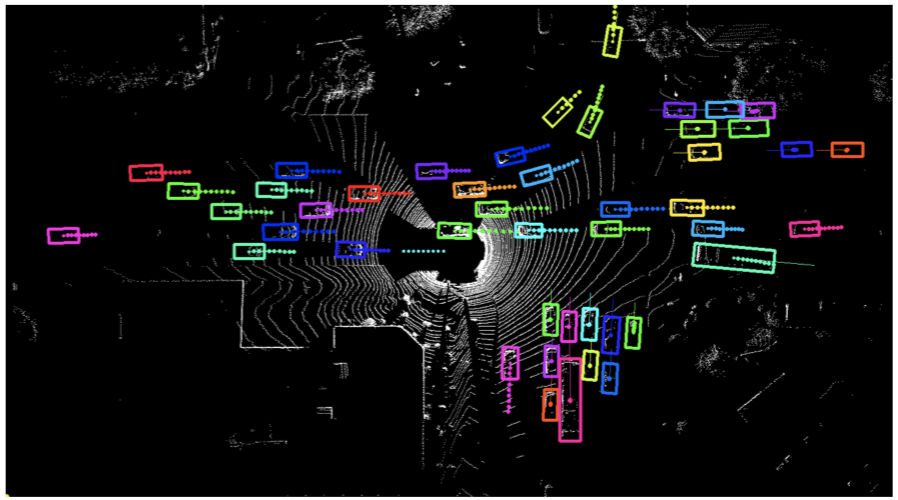Temporal 3D Object Detection in Lidar Point Clouds for Autonomous Driving
Abstract
Although Lidar data is acquired over time, most Object Detection methods only work on a frame by frame basis and neglect useful temporal information.The goal of this master thesis is develop and implement novel ways to use temporal information from Lidar Point Clouds to improve Object Detection or Motion Forecasting.
This Thesis will be done in cooperation with BMW.
Example of Object Detection and Motion Forecasting on Lidar Point Cloud:

source: Luo, Wenjie, Bin Yang, and Raquel Urtasun. "Fast and furious: Real time end-to-end 3d detection, tracking and motion forecasting with a single convolutional net." CVPR 2018
Details
- You will work with the state-of-the-art Deep Learning techniques and harness useful information available in the temporal domain of Lidar sequences.- You will research literature on state-of-the-art methods in temporal fusion for Lidar Point Clouds.
- You will help develop novel ways to use temporal information to improve Object Detection and Motion Forecasting.
- You will prepare datasets and run exhaustive experiments to improve and validate the developed models.
- You will work with BMW in a diverse team of developers and students.
Requirements
- You are familiar with Deep Learning, Computer Vision and Convolutional Neural Networks.- You have solid skills in Pytorch, Python, and are familiar with Linux OS.
Literature
Luo, Wenjie, Bin Yang, and Raquel Urtasun. "Fast and furious: Real time end-to-end 3d detection, tracking and motion forecasting with a single convolutional net." - CVPR 2018 pdfHuang, Rui, et al. "An LSTM Approach to Temporal 3D Object Detection in Lidar Point Clouds." - ECCV 2020 pdf
Application
If you are interested, please contact us with your latest transcript and CV for inquiries and applications.| Students.ProjectForm | |
|---|---|
| Title: | Temporal 3D Object Detection in Lidar Point Clouds for Autonomous Driving |
| Abstract: | Although Lidar data is acquired over time most Object Detection methods only work on a frame by frame basis and neglect useful temporal information. The goal of this master thesis is develop and implement novel ways to use temporal information from Lidar Point Clouds to improve Object Detection or Motion Forecasting. This Thesis will be done in cooperation with BMW |
| Student: | Theo Beffart |
| Director: | Federico Tombari |
| Supervisor: | Alexander Lehner |
| Type: | Master Thesis |
| Area: | Machine Learning, Computer Vision |
| Status: | running |
| Start: | 15.04.2021 |
| Finish: | |
| Thesis (optional): | |
| Picture: | |